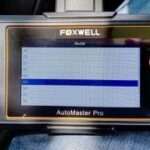Navigating the complexities of your vehicle can be daunting, especially when the check engine light illuminates. At carparteu.com, we specialize in automotive repair and diagnostics, and we’re here to demystify one of the most common indicators of car trouble: Obd2 Check Engine Codes.
Understanding OBD2 check engine codes is crucial for every car owner. These codes are generated by your vehicle’s onboard diagnostic system (OBD-II), a sophisticated network that monitors the performance of your engine, transmission, and other critical systems. When something goes wrong, the system triggers the check engine light and stores a diagnostic trouble code (DTC) to pinpoint the issue.
Think of OBD2 check engine codes as your car’s way of communicating specific problems. These codes are standardized across most vehicles manufactured after 1996, making it easier to diagnose issues regardless of make or model. While the check engine light can be alarming, understanding the underlying OBD2 check engine codes can empower you to take informed action, whether it’s a simple fix or a trip to your trusted mechanic.
Types of OBD2 Codes: Generic vs. Manufacturer-Specific
OBD2 check engine codes are categorized to help narrow down the problem area. The most common type are powertrain codes, starting with “P,” which relate to the engine and transmission. Within the “P” codes, you’ll find two main categories:
-
Generic Codes (P0___, P2___, P3___ Generic): These are standardized codes used by all manufacturers. They cover common issues that can occur in any vehicle, providing a universal starting point for diagnosis. For example, a P0300 code indicates a random misfire in the engine.
-
Manufacturer-Specific Codes (P1___): These codes are unique to specific car manufacturers. While they still relate to powertrain issues, they often point to more specific problems or components unique to that brand. For instance, a P1 code in a Ford might relate to a specific sensor within their engine management system.
Beyond powertrain codes, OBD2 check engine codes also include:
- Body Codes (B****): These relate to systems within the vehicle’s body, such as power windows, airbags, and anti-lock braking systems (ABS).
- Chassis Codes (C****): These codes pertain to chassis-related systems like steering, suspension, and braking.
- Network Communication Codes (U****): These codes indicate issues with the communication network within the vehicle, often involving the Controller Area Network (CAN bus).
Understanding these categories helps you interpret OBD2 check engine codes more effectively and focus your diagnostic efforts.
How to Find Your OBD2 Check Engine Codes
Retrieving OBD2 check engine codes is straightforward and typically requires a simple tool: an OBD2 scanner. These scanners plug into your vehicle’s OBD2 port, usually located under the dashboard on the driver’s side.
Here’s a basic process:
- Purchase an OBD2 Scanner: Scanners are widely available online and at auto parts stores, ranging from basic code readers to more advanced diagnostic tools.
- Locate the OBD2 Port: Consult your vehicle’s owner’s manual if you’re unsure of its exact location.
- Plug in the Scanner: With your vehicle turned off, plug the scanner into the OBD2 port.
- Turn the Ignition to “ON” (Engine Off): Follow the scanner’s instructions to power it up and establish a connection with your vehicle’s computer.
- Read the Codes: Use the scanner’s interface to retrieve the stored OBD2 check engine codes. The scanner will display the code(s) – for example, “P0171” – and often provide a brief description.
Once you have your OBD2 check engine codes, you can begin to diagnose the problem.
Decoding and Troubleshooting OBD2 Codes
Having the OBD2 check engine code is just the first step. The next crucial step is to understand what the code means and how to troubleshoot the issue.
- Look Up the Code: Websites like OBD-Codes.com (where you may have found this article!) and others provide extensive databases of OBD2 check engine codes. Enter your code to find its meaning and potential causes.
- Consider the Symptoms: Note any symptoms you’ve observed in your vehicle, such as rough idling, decreased fuel economy, strange noises, or unusual smells. These symptoms, combined with the OBD2 check engine code, can provide valuable clues.
- Start with Simple Checks: Many OBD2 check engine codes can be triggered by simple issues. For example, a loose gas cap can cause an EVAP system code. Before assuming a major problem, check the gas cap, fluid levels, and visually inspect for any obvious issues like loose hoses or connectors.
- Consult Repair Resources: Online forums, repair manuals, and websites like carparteu.com offer troubleshooting guides and repair information for various OBD2 check engine codes.
- Seek Professional Help: If you’re uncomfortable diagnosing or repairing the issue yourself, or if the problem seems complex, it’s always best to consult a qualified mechanic. Provide them with the OBD2 check engine code to expedite the diagnostic process.
Resources for OBD2 Check Engine Codes
Carparteu.com is your comprehensive resource for understanding and addressing OBD2 check engine codes. We offer:
- Detailed Code Definitions: Explore our extensive database of generic and manufacturer-specific OBD2 check engine codes.
- Troubleshooting Guides: Access articles and guides to help you diagnose and resolve common issues related to specific codes.
- Expert Advice: Benefit from our team of automotive experts who provide insights and recommendations on vehicle repair and maintenance.
Don’t let the check engine light and OBD2 check engine codes intimidate you. With the right information and resources, you can understand your vehicle’s signals and take the appropriate steps to keep it running smoothly. Start your journey to understanding your car better with carparteu.com!
Disclaimer: This information is for informational purposes only and should not be considered professional repair advice. Always consult a qualified mechanic for vehicle repairs.
